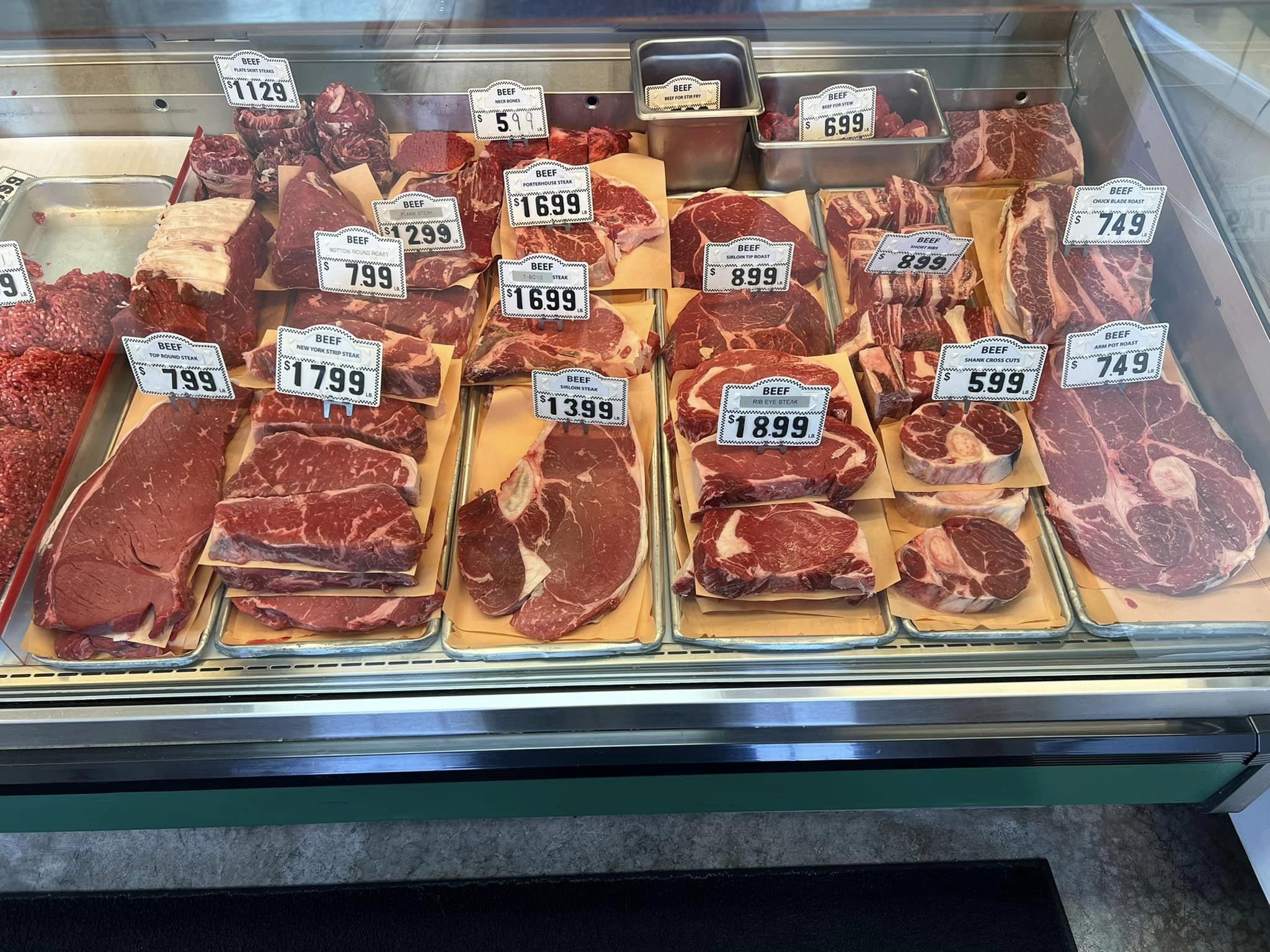Check Out Bagley Farms Meat Market Edwardsville IL for Farm-Fresh Meat and Specialty Cuts
Check Out Bagley Farms Meat Market Edwardsville IL for Farm-Fresh Meat and Specialty Cuts
Blog Article
Discover the Art of the Butcher's Cut in a Modern Meat Market
In the ever-evolving landscape of contemporary meat markets, the butcher's cut has transcended its conventional roots, merging olden craftsmanship with modern practices. bagley farms meat market edwardsville il. Today's butchers are not simply cpus of meat; they are educated artisans who stress sustainability and moral sourcing. Their competence in picking and preparing cuts tailored to specific cooking requirements provides an exceptional dining experience. What truly establishes the modern-day butcher apart is their ability to build a deeper link between consumers and the beginnings of their meat. Exactly how do these masters equilibrium custom with development, and what ramifications does this have for the future of meat intake?
Development of Butchery Strategies

The mid-20th century saw butchery strategies better fine-tuned by scientific insights into muscular tissue biology and meat aging, boosting both inflammation and taste. Innovations like vacuum cleaner product packaging and refrigeration prolonged product shelf-life, allowing butchers to expand offerings and boost high quality control. This period additionally noted the increase of specialized tools, such as band saws and meat slicers, which boosted precision and efficiency in meat handling.
The 21st century has actually introduced electronic innovation into the butchery world. Electronic systems now assist in tracking animal provenance and optimizing cuts to satisfy details customer preferences. Furthermore, a revival in artisanal butchery has arised, blending standard skills with modern-day expertise to provide to consumers looking for ethical and lasting meat options. This evolution highlights a dynamic interaction in between custom and innovation, conference contemporary demands while maintaining the craft's heritage.

Comprehending Meat Cuts

Comprehending the intricacies of meat cuts is crucial for both butchers and customers seeking top quality and value. For butchers, precise cuts mirror skill and regard for the craft, making sure minimal waste and optimum yield.
The primary classifications of meat cuts include primitive, sub-primal, and retail cuts. Primal cuts, such as the loin, rib, and chuck, are the huge sections initially divided from the carcass. Butchers then damage these down further right into sub-primal cuts, before ultimately creating retail cuts available to customers, like ribeye or tenderloin. Each stage calls for cautious attention to physiological structure and muscular tissue make-up.
Recognizing muscle make-up is essential; muscular tissues used a lot more frequently by the animal often tend to be tougher and are best matched for slow-moving cooking techniques, while less-used muscles, like those located in the loin, are much more tender and perfect for grilling or roasting. Experience with these differences encourages consumers to make informed options, boosting their cooking endeavors.
Choosing High Quality Meat
Picking the ideal meat includes more than simply choosing a index visually appealing item from the screen. The art of selecting top quality meat needs a discerning eye and expertise of details qualities that represent quality and excellence.
Secondly, take into consideration the marbling, which refers to the white streaks of fat within the muscle mass. Proper marbling is a vital sign of tenderness and taste, as it melts throughout food preparation, enhancing the meat's juiciness. Bear in mind, higher marbling usually associates with premium top quality cuts, such as USDA Prime.
Texture is an additional vital factor; meat needs to feel solid to you can try these out the touch, not slimy or excessively soft. Additionally, be conscious of the scent. Fresh meat must have a clean, neutral odor, devoid of any type of sour or repulsive odors.
Combining Cuts With Cooking Techniques
Efficiently matching cuts of meat with the ideal cooking techniques is crucial for achieving ideal taste and structure. Various cuts differ in tenderness, marbling, and connective tissue web content, Visit Website each requiring particular strategies to unlock their capacity. For circumstances, tender cuts like filet mignon and ribeye, with their inherent marbling, benefit from high-heat, quick-cooking approaches such as grilling or pan-searing. These methods improve the meat's all-natural tastes and ensure a juicy finish.
Alternatively, tougher cuts like brisket and chuck roast are rich in collagen, which breaks down into gelatin when cooked slowly. These cuts are suitable for braising or slow roasting, permitting the meat to tenderize over time and develop deep, complex tastes. Cuts such as brief ribs and pork shoulder make out well with slow-cooking techniques, where prolonged cooking times transform their robust appearances right into succulent dishes.
Lamb shanks and oxtail, which require long term food preparation to soften, are ideal candidates for stewing or slow simmering. These methods coax out abundant, passionate flavors while maintaining dampness. By recognizing the special qualities of each cut, cooks and home cooks alike can boost their cooking developments, guaranteeing each dish is both pleasing and unforgettable.
The Butcher's Role Today
Navigating the advancing landscape of the modern meat market, the butcher's duty today extends past mere prep work of cuts. Contemporary butchers are culinary craftsmens, educators, and advocates for lasting methods.
Along with crafting accurate cuts, butchers currently engage directly with consumers, providing cooking suggestions and tailoring options to suit specific needs and preferences. Their know-how in meat aging, marbling, and flavor profiles encourages consumers to make educated choices, enhancing their cooking experiences. This personalized service exhibits the butcher's evolving function as a relied on advisor in the kitchen area.
Moreover, butchers are essential in decreasing waste, utilizing entire pets to create diverse items such as sausages and supplies - bagley farms meat market edwardsville il. This extensive strategy not only appreciates the pet yet also lines up with modern sustainability goals. This way, the modern-day butcher personifies both tradition and development, adapting to an ever-changing market while protecting the virtuosity and honesty of their craft

Verdict
Proficiency in understanding varied meat cuts and quality signs encourages butchers to offer enlightened recommendations, lining up specific cuts with ideal food preparation methods. By recognizing historic practices while accepting modern needs, the butcher's duty remains important in today's innovative meat market.
Report this page